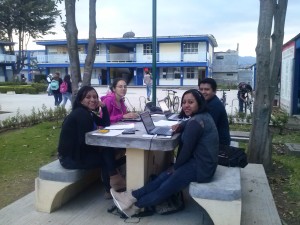 In another post I briefly wrote about the importance of a training manual. Here I will breakdown what sections an effective training manual should have.
In another post I briefly wrote about the importance of a training manual. Here I will breakdown what sections an effective training manual should have.
The Front Page should contain the project´s name, institution, founding source, the PI name and date. The front page should be always followed by adetailed index.
I always start my training manual with a short (1 or 2 pages long) explanation of what “team work” is. I write this introduction depending on the type of hierarchy that the team will have. The main goal of this introduction is to set a team player mind set as well as introduce what is expected of each team member including myself. In this section I write down the rules of the training week.
The second section should be an introduction to the project. I believe that all the team members should have a clear idea of what data and why they are collecting that data. I only employ assistants that are or will become critical thinkers and I encourage them to actively participate in the research design of the project, they can only fully participate if they understand the research objectives of the project. This section includes a brief introduction to the research project, research questions, hypothesis and a methodological overview. If this is the second phase of an existing project, assistants should be introduced to the preliminary work.
There should be a section on the research site and site selection. This section is extremely important when working on a multi-sited research project as every team members has to understand why his or her community is important. This will allow them feel integral to the research project.
Also, if permission has not been yet granted or assistants will be recruiting participants information on participant recruitment, participant permission, obtaining permission or consent and other related tasks should be included. If the project has IRB approval and the assistants are not familiar with IRB standards (i.e. they are researchers from another country) there should be a section on ethical considerations of the recruitment process. This section should include an example of the actual recruiting and consent forms that have been approved for the project. Assistants should review them to ensure that the language is appropriate, correct and clear.
The methods section differs from project to project and can be structured differently depending on the project. If assistants will be part of several phases of data collection I advise to structure this section following that time frame. In other words, explain first, what assistants will do first, then what they will do later. Each method used should be described in exaggerated detail. Never assume that assistants know how to do anything since they might not know and be embarrassed to disclose it, or since they might do it differently than what you expects. Setting clear expectations is key to a good data collection and this can be achieved by writing down every procedure and including examples. At the training this is an ideal moment to have assistants practice each data collection technique.
One of the most important sections is the one that covers the data management. No matter how big or small the team, managing and organizing the data can be a difficult and time consuming task. The manual should include instructions on the naming patterns followed in the project; the frequency, name and place of the back ups; and transcription rules.
Some projects use special reimbursement forms and these should be explained in the manual.
I also like to include a calendar containing the week by week goals of the project, dates and locations of our upcoming meetings, pay days, days off, etc.
The appendix section contains all the final versions of the instruments used in the field translated in all the languages that will be used. This allows assistants to photocopy any instrument while in the communities if needed.
I print and bind a copy of the manual for each team member. I give them the copy the first day of the training and they keep it with them during all the fieldwork. Additionally, all the documents that are given to the team should be written in clear formal language.